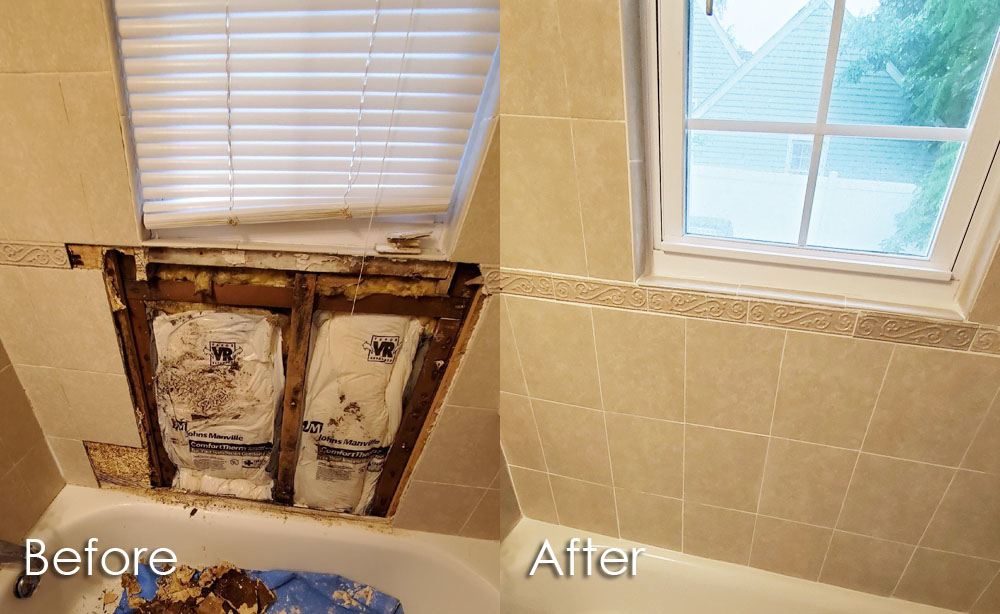Ways to Fix a Water-Damaged Wall in the Bathroom
Contact Us TodayAre you trying to find answers about Common Causes of Water Damage in a Bathroom?

The restroom is extremely at risk for damp buildup and possible water damage as a result of the regular use of water in it. This post supplies easy inspection methods to help discovering water damages threats.
The regular use water in the washroom makes it incredibly prone for moist accumulation as well as possible water damage. By checking it routinely, you can minimize water related damages.
The complying with collection of examinations is easy to carry out and also need to be done once in every three months in order to maintain your shower room healthy as well as to avoid possible water problems brought on by the bath tub, the shower, pipeline joints and also plumbing, sinks, closets, as well as the bathroom
Do not disregard executing these examinations and also be thorough while executing them. Remember that these straightforward examinations can conserve you a great deal of cash by supplying very early indicators for water damages
Tub as well as Shower
The shower as well as bathtub require special focus and also upkeep. Examine the ceramic tiles as well as replace if broken. Ensure that there is no missing grout in between the floor tiles. Check as well as replace broken caulking at joints where the walls fulfill the flooring or the tub. Blocked drains and also pipelines issues will certainly protect against the bath tub from drying out as well as may indicate major problems beneath the bath tub. Seek advice from a specialist quickly to avoid architectural damage. Take note of discolorations or soft areas around the bath tub wall surfaces as they might suggest an internal leak.
Plumbing
Signs for water damages are tough to find considering that a lot of pipes are installed inside the walls.
Pay unique interest to flooring and wall surfaces wetness as well as stains as they might show an undetectable plumbing problem. Examine wetness levels in adjacent spaces also.
Sinks and also Cabinets
Sinks and also cupboards are exposed to dampness and also humidity day-to-day as well as are usually ignored. Examine routinely under the sink and on the kitchen counter over it. Fix any drip in the trap as it might suggest drain troubles. Browse the sink, sluggish draining pipelines might indicate an obstructed drain. Change sink seals if they are broken or loosened.
The Bathroom
The toilet is an at risk water junction. Examine the water lines as well as look for leaks around the toilet seat, in the pipe, and under the water container. If you spot any kind of indications of moisture on the flooring around the toilet, check for leaks in the toilet edge and also tank seals.
Understand that hanging commode bowl antiperspirants increases the possibilities for obstructions.
Water Damage Signs In The Bathroom To Avoid Cleanup
Musty smell
This is one of the easiest signs to catch because musty smells are so odorous. The damp, earthy, moldy smell should be a big red flag. The smell will develop when moisture gets trapped in surfaces, and begins to facilitate mold growth. Leaking pipes under cabinets, inside walls, and behind shower fixtures will cause moisture to stay trapped and not dry, which will lead to mold growth and spread. As soon as you notice any musty smells in your bathroom, have it checked for hidden water damage and cleanup signs.
Visible mold
If the smell isn’t there to give it away, sometimes you will actually see mold growth. Finding mold in your bathroom is a serious problem, because mold is very harmful to your health. By the time mold growth is visible, it also means that water damage has already occurred and been present for some time. The only way the mold problem can be resolved is to find the source of the moisture and get it stopped. To safely and adequately remove mold, you need to have professionals handle the remediation. Do not waste any time in getting mold problems addressed, fixed, and sanitized so that you can protect you and your family from the many respiratory symptoms caused by mold exposure.
Damaged floors
Bathroom floors should be able to withstand some exposure to water while still remaining in good condition. However, when excess exposure or water leaks occur, they will begin to damage even the most water-resistant flooring. If you notice any cracking, bubbling, staining, or warping on your bathroom floors, there is probably a water leak somewhere causing the distortion. If you notice areas of the floor have become softer, or even have a spongy feeling, there is probably damage to the subfloor. Subflooring is typically made up of plywood. When plywood is exposed to water or moisture, it will absorb it. Once it has become saturated, the weight of the excess water will cause the wood to swell and soften. Check the floors in your bathroom frequently to catch any of these sings before they lead to damaged subflooring.
Changes on walls
When water leaks behind walls, it will cause changes in the drywall. Peeling plaster, blistering paint, and soggy wallpaper are all good indicators that excess water is building up behind the wall. Water leaking behind drywall will cause it to swell and be soft to the tough. If you start to notice gaps along the trim of your walls, or where tile meets the wall, it could also be a strong indicator that there is a leak behind the wall. Any changes, distortion, or damage on the walls should be evaluated as soon as you notice it to prevent further water damage and cleanup.

Hopefully you enjoyed our topic about Preventing Water Damage in the Bathroom. Thank you so much for finding the time to browse our piece. Liked our blog entry? Please share it. Let someone else check it out. Thank you for going through it.
Contact Us Now